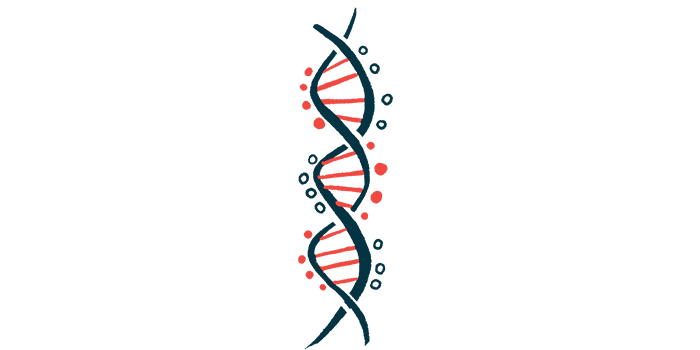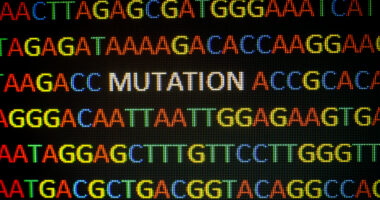Study Identifies New AIRE Mutations in Chinese Patients with APS1

Four new mutations of the AIRE gene were identified for the first time in Chinese patients with autoimmune polyendocrine syndrome type 1 (APS1), a case series reports.
The report also presents a thorough evaluation of the clinical and genetic characteristics of Chinese APS1 patients and some rarely observed symptoms. Altogether, the findings provide additional insights into the causes and manifestations of APS1.
The study, “Characterization of the clinical and genetic spectrum of autoimmune polyendocrine syndrome type 1 in Chinese case series,” was published in the Orphanet Journal of Rare Diseases.
APS1 is an inherited autoimmune disorder that affects multiple organs in the body, including the parathyroid glands. Mutations in the autoimmune regulator (AIRE) gene have been reported as the cause of APS1.
The syndrome is clinically defined by the presence of at least two of the following three conditions: hypoparathyroidism, Addison’s disease (adrenal insufficiency), and chronic mucocutaneous candidiasis (CMC), which is an infection of the skin, mucous membranes, and nails. Other less-common symptoms can also be present, such as enamel hypoplasia (deficiency).
More than 100 AIRE mutations have been associated with APS1, most of which are inherited recessively. This means that for APS1 to develop, two copies of the defective gene, one from each parent, must be present. However, some mutations, such as those located in specific regions of the AIRE gene — called SAND and PHD1 — can be passed down in a dominant way, meaning that only one copy of the mutated gene is necessary for the syndrome to occur.
It is still unclear how some mutations translate into certain clinical symptoms, or how they impact the severity of symptoms. Additionally, because the signs of the disorder vary considerably, diagnosis is often difficult.
Most studies on the clinical profiles of APS1 are from European countries, while data from China is limited. To address this knowledge gap, a team of researchers sought to evaluate the clinical and genetic features of a group of Chinese patients with APS1.
The study enrolled 13 patients, from 12 unrelated families, who were diagnosed between 1994 and 2018 at Peking Union Medical College Hospital. Seven patients were females and six were males. Two siblings were from the same family with consanguineous (related) parents.
APS1 was defined as having two of the three major associated conditions (CMC, Addison’s disease, and hypoparathyroidism), any one of the three conditions with a positive family history of APS1, or mutations in AIRE.
Until age 21, at the last follow-up, six patients (46.2%) had the classic triad, while five (38.5%) had two of the three conditions. Eleven participants were clinically diagnosed and five of them had their diagnosis confirmed by genetic testing. Two patients had only one of the three typical conditions: one was diagnosed based on a disease-causing AIRE mutation, and the other on family history of APS1.
The age at onset of the first symptom was 5.5 years. Initial symptoms were hypoparathyroidism in nine participants (69.2%) and CMC in four (30.8%). In total, 12 patients (92%) had hypoparathyroidism, with onset or diagnostic age of 9 years. CMC, which included oral candidiasis, athlete’s foot, and fungal infection of the hands, was found in nine patients (69.2%) with average onset age being about 8 years. Nine cases of Addison’s disease were diagnosed at an average age of 13 years.
“Compared to the classical clinical findings, our results were generally similar to those reported in Finland, Italy, Norway, Iran (in Iranian Jews), and Russia, and hypoparathyroidism primarily ranked first,” the investigators wrote. However, CMC occurred at a later age compared to cases reported in the literature.
Altered enamel levels, and nail distortion and discoloration were found in six patients. Hair loss was reported in eight. Other less-common symptoms were observed in some patients, including blood conditions such as myeloproliferative disease and pure red cell aplasia, a disorder of blood production. Among other findings, one participant had ankylosing spondylitis, the first time this has been reported in a patient with APS1.
AIRE gene sequencing was conducted in six patients. Seven different AIRE mutations were detected, including four that had never been reported before.
One patient carried a compound heterozygous variant (p.A246fs and p.L308F), meaning he had one mutation in one gene copy and a different mutation in the other. These were localized to the SAND and the PHD1 domains.
Three patients inherited homozygous mutations (the same in both gene copies). These three mutations — p.Q69P, p.Y90C, and p.K161fs — were found on different sections of the AIRE gene, known as CARD and NLS.
Another two cases carried heterozygous mutations, one in each gene copy (p.L13P and p.G208V) in the CARD and SAND regions.
Next, the researchers performed a literature search and review of published clinical data from 2000 to 2018 on Chinese APS1 patients. Fourteen AIRE mutations were identified in patients from the current study combined with the reported cases. Until now, 10 of these mutations had not been reported in China.
“To the best of our knowledge, this is the first case series of Chinese patients with APS1 in a single center,” the researchers wrote. “Classical features in our patients are similar to those reported in the literature, with the exception of a relatively later onset of CMC in our group.”
“Moreover, instances of rare manifestations were first reported in patients with APS1, and 10 different AIRE mutations identified had not been previously reported,” they concluded. “Thus, our findings help to expand the clinical and genetic spectrum of APS1.”
The team noted that functional studies are still needed to verify whether reported AIRE mutations are indeed APS1-causing.








